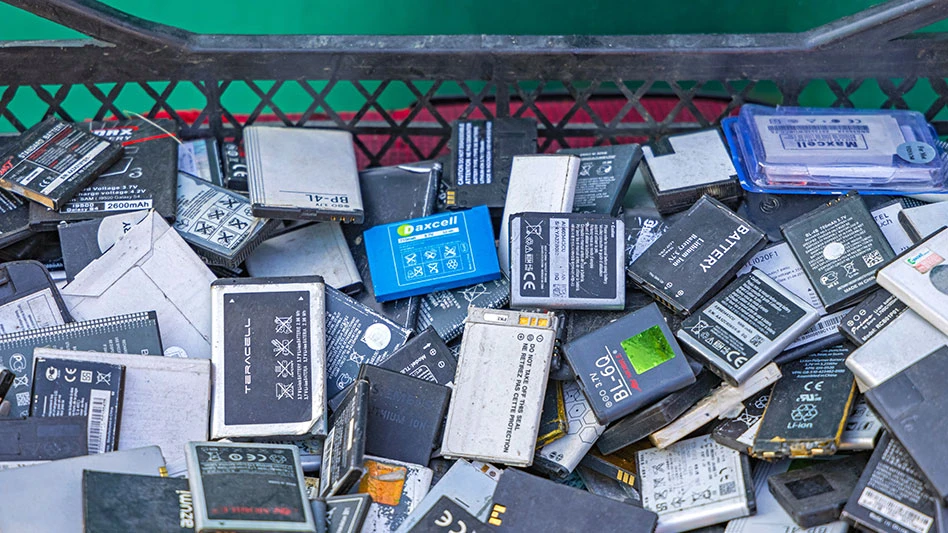
Photo courtesy of Hydro
Norway-based Hydro says it will focus on low-carbon aluminum production as well as expanding its portfolio into recycling, renewables and batteries by 2025.
“We have generated cash, cut costs and delivered extensive operational improvements across the company, providing a solid foundation for our growth agenda,” says President and CEO Hilde Merete Aasheim. “Now, we’re raising the bar, setting a new ambitious improvement target for 2025, combined with a clear strategy to make Hydro a profitable and sustainable industry leader.”
In the last year, the company says it has focused on “keeping the wheels turning, maintaining a healthy and safe work environment” while also working to position the company for the future. Hydro’s improvement program remains on track to deliver its 2020 target of $456 million, with the company adding that all business areas “over-delivered” on their cost ambitions. The improvement program, accompanied with a net operating capital release and reduction in capex, contributed to greater cash generation in 2020.
Hydro says a key driver of its 2020 improvement has been the ramp-up and “increased operational robustness” of its bauxite and alumina operations in Brazil. Alunorte is on track to deliver alumina volumes at around 90 percent of nameplate capacity in Q4 2020.
“Our Brazilian organization has made good progress in increasing the asset integrity and robustness while maintaining focus on health and safety during the global pandemic,” Aasheim says.
Hydro says its overall goal to reduce CO2 emissions by 30 percent by 2030 remains on track. The company adds that it is committed to replacing fuel oil with natural gas at the Alunorte refinery and to then electrify coal boilers at Alunorte. Hydro adds that it has signed intentional agreements to develop solar and wind power projects to deliver renewable energy at an attractive cost.
The company says it also plans to strengthen its position in low-carbon aluminum by 2025. Several of the global megatrends are supporting increased demand for aluminum, Hydro says, citing London-based CRU’s forecast that aluminum demand in the vehicle sector is expected to grow by 6.2 million metric tons by 2030. CRU also expects demand for aluminum can stock to grow by 3 million metric tons by 2030. Total semis demand is expected to increase by 32 million metric tons by 2030, as well, according to CRU.
Over the past year, Hydro says it has seen increased demand for low-carbon Hydro Circal and Hydro Reduxa, and demand is expected to grow further in 2021.
The second pillar of its 2025 strategy diversifies and expands Hydro’s portfolio into recycling, renewables and batteries. Growing into these areas positions Hydro to take advantage of growth from key megatrends such as sustainability, electrification and urbanization, the company says.
“We will grow in areas where our capabilities match the megatrends, first and foremost in recycling, renewable energy and batteries,” Aasheim says. “Our capabilities and unique low-carbon position are enablers for growth in these areas. Our current recycling portfolio is a solid foundation for further growth, and Extruded Solutions is shaping demand through innovative solutions in combination with a strong and diversified asset base.”
Hydro currently has a portfolio of 29 recyclers and an annual capacity to consume 2.6 million metric tons of aluminum scrap. The 2025 ambition includes a doubling of Hydro’s current postconsumer scrap use, which could provide an earnings increase that ranges from $114 million to $171 million, according to the company. A strategy has been established “across the recycling value chain” within Primary Metal, Rolled Products and Extruded Solutions, the company indicates.
In renewables, Hydro has created a new unit, Renewable Growth, designed to leverage its industrial footprint and energy competence to take positions in renewable energy projects, primarily in the Nordics and Brazil.
The company says it also has established a new Battery unit as part of Hydro Energy. Hydro already has undertaken several investments in the battery value chain in recent years. The strategy leading to 2025 includes additional investment with battery partners in what it calls “attractive areas of the value chain,” resulting in pro-rata earnings potential of $68 million to nearly $80 million from the invested companies.
“Hydro remains committed to driving long-term value for our shareholders, and I am pleased with the cash generation over the past, challenging year,” Hydro Chief Financial Officer Pål Kildemo says. “Looking forward, we have reconfirmed and stretched the road maps to satisfactory profitability for each of our business areas within the 2025 time frame.”
Latest from Recycling Today
- Cards renews municipal contract with Harrah, Oklahoma
- Secure Recycling scales up e-scrap shredding operations
- Farewell to Foam Act reintroduced to Congress
- European Commission publishes material stream requests for non-OECD country applications
- Shapiro receives NATM Innovation Award for Sustainability Excellence
- EAF mill underway in California
- Constellium recycled feedstock rate holds steady in 2024
- Lamor buys remaining shares in plastic scrap-to-oil facility





